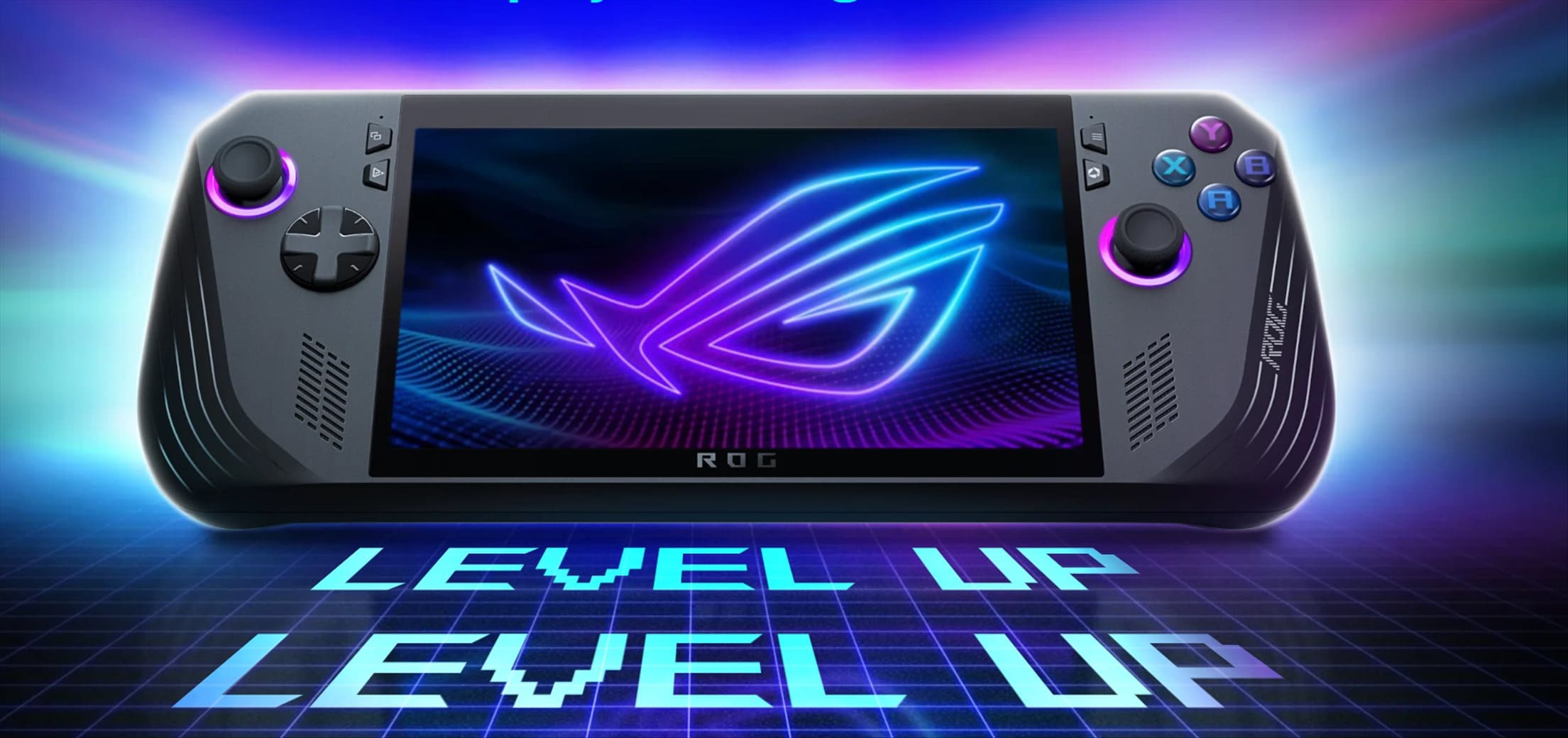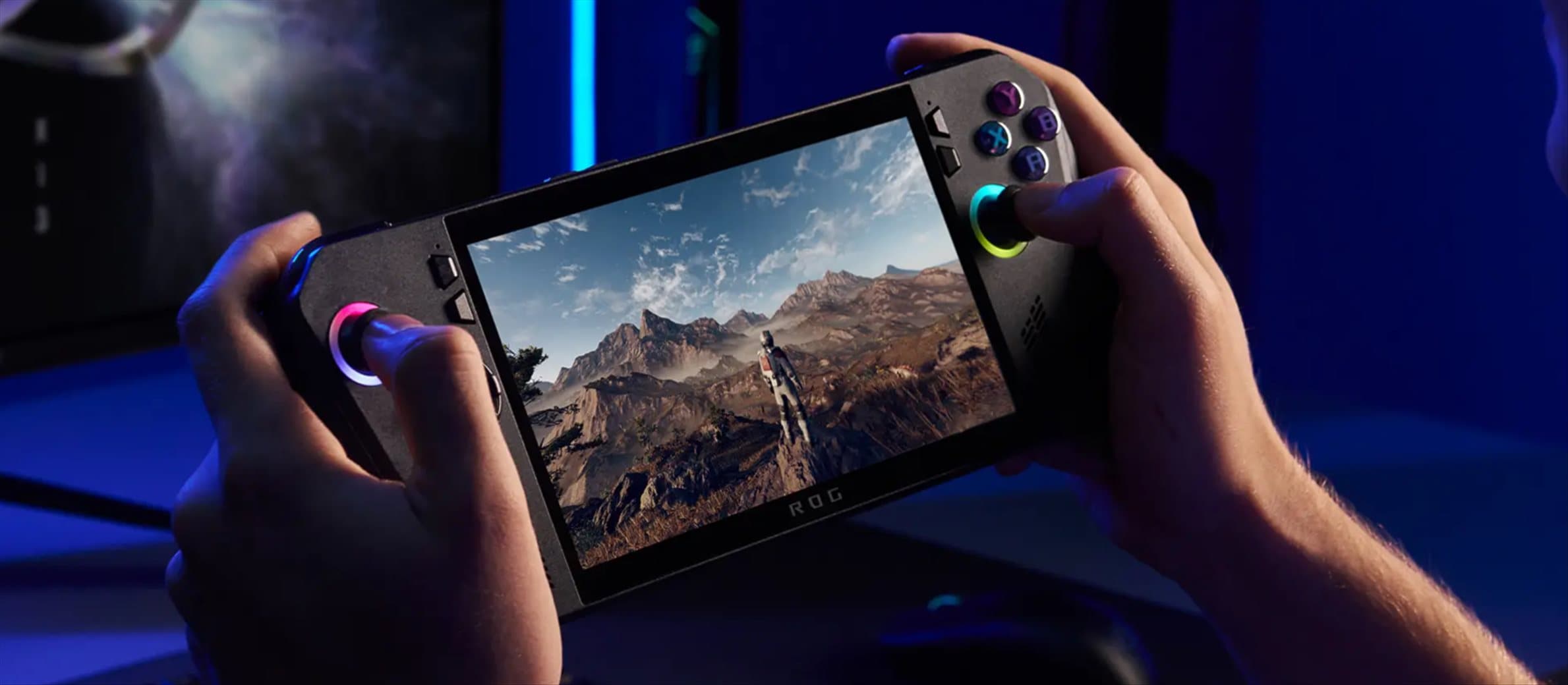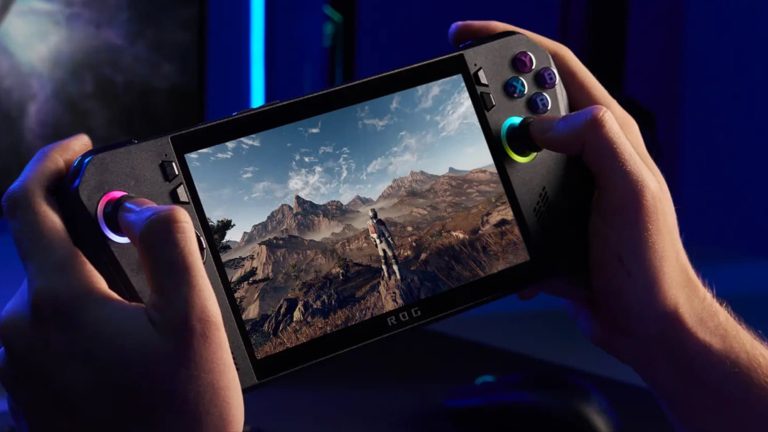As a fan of video games, I’m sure you know about ASUS and its ROG Ally. Sadly, the portable gaming PC didn’t do so well on the market due to some controversial features. But as we shall see in this review, the new ASUS ROG Ally X has kind of addressed these controversies.
For instance, a number of users complained of their original ROG Ally damaging MicroSD cards. The conclusion was that this issue occurred from the poor positioning of the MicroSD slot – near the fan exhaust. And as a solution, the ASUS team has relocated the MicroSD slot, as well as redesigned the fan vent of ROG Ally X.
However, has this solved the MicroSD card problem completely? Also, did the company remember to address the external sharp edges that caused discomfort when gaming? Then, will I still be able to play my video games outdoors?
Verdict: 8 Crucial Things to Know about ASUS ROG Ally X Handheld Gaming PC
- ASUS ROG Ally X has a large 80Whr Li-ion battery
- ASUS ROG Ally X has a variable refresh rate of up to 120Hz
- ASUS ROG Ally X has 1TB local storage & MicroSD support
- ASUS ROG Ally X has a wide 7-inch 1080p FHD native display
- ASUS ROG Ally X has 24GB of RAM @7500MHz transfer speed
- ASUS ROG Ally X has no built-in trackpads to emulate the mouse
- ASUS ROG Ally X runs on the same Ryzen™ Z1 Extreme processor
- ASUS ROG Ally X has two USB-C ports for both power & external display
A Quick Summary of the ASUS ROG Ally X Handheld Gaming PC
The purpose of this ASUS ROG Ally X review is to answer various questions you may be wondering about it. It is a quick review as I’m basing it on the pre-release sample that ASUS has been sending to reviewers.
Before everything else, though, below are summary features and specs of the ASUS ROG Ally X Handheld Gaming PC:
| ASUS ROG Ally X | ASUS ROG Ally OG | |
| Release Year | July 2024 | June 2023 |
| Dimensions | 11.0 in x 4.4 in x 1.5 in | 11.0 in x 4.4 in x 1.3 in |
| Weight | Approx. 678g | Approx. 608g |
| Processor | Ryzen™ Z1 Extreme | Ryzen™ Z1 Extreme |
| CPU | 8-core Zen 4 (@ 3.3 – 5.1GHz) | 8-core Zen 4 (@ 3.3 – 5.1GHz) |
| GPU | 12x RDNA 3: (up to 2.7GHz) | 12x RDNA 3 (up to 2.7GHz) |
| Operating System | Windows 11 | Windows 11 |
| APU Power | 9 – 30W | 9 – 30W |
| Memory (RAM) | 24GB LPDDR5 | 16GB LPDDR5 |
| Built-in Gyro | YES | YES |
| Built-in Storage | 1TB (+ MicroSD card) | 512GB (+ MicroSD card) |
| Display size | 7.0 inches (LCD) | 7.0 inches (LCD) |
| Display Brightness | Up to 500 nits | Up to 500 nits |
| Handheld Resolution | 1080p FHD (up to 120Hz) | 1080p FHD (up to 120Hz) |
| Docked Mode Support | YES | YES |
| Built-in Tracking pads | NO | NO |
| Battery Capacity | 80WHrs | 40WHrs |
| Wireless Connectivity | Up to WiFi 6E tri-band | Up to WiFi 6E tri-band |
| Built-in LAN Port | N/A | N/A |
| Standard 3.5mm Audio Jack | YES | YES |
| Type of USB Port | 2x USB-C | 1x USB-C |
| HDMI Output | N/A | N/A |
| Bluetooth Connectivity | YES (V5.2) | YES (V5.2) |
| Built-in NFC Chip | N/A | N/A |
In a nutshell, ASUS has only made a few changes to the ROG Ally X. Of course, the new changes are on some of the most crucial features. But I’ve seen some owners of the original ROG Ally say there’s still no enough reason for them to “upgrade”.
For example, ROG Ally X is running on Ryzen Z1 Extreme chip, with a Zen 4 CPU and RDNA 3 GPU. As such, it supports as many games as the original Ally. But since the fresh gaming handheld has 24GB of RAM, the games now load faster.
ASUS ROG Ally X also has the same 7-inch display, with a 1080p Full HD resolution and 120Hz refresh rate. I’m one of the gamers who really hoped the portable gaming PC would give us a chance to play our video games outdoors.
While you can game outdoors, the display of the Ally X is still not as bright as that of the Steam Deck OLED. Then again, this was a sacrifice ASUS had to make to give us a variable refresh rate.
ASUS ROG Ally X Review: Other Features & Capabilities of the Handheld Gaming PC (based on pre-release sample) Availability & Price in Australia
Fortunately, ASUS is available locally, making it easy to get their products. Unfortunately, though, the ROG Ally X will be available to consumers until 22nd July 2024. The company e-shop has the option to pre-order the device, which you’ll get in their first shipping wave.
At the time of writing, the listed ASUS ROG Ally X price in Australia is $1,599. If shopping in the US, the gaming handheld is going for $799.
Whether ordering locally or abroad, the ROG Ally X is pricier than the original ASUS handheld by a couple of bucks. The original handheld launched at a promotional price of $A1,100 (or $700 in the US), which remains even today.
A Fresher Build & Design 
While a few inches away, the face of the ROG Ally X is so much like the original model, except in black. ASUS retained the audio speakers, both of them, on the front and in a similar design as the original. The buttons for the View, Command Center, Armoury Crate, and Menu shortcuts are also still in the original position.
Further, both joysticks have an RGB light ring that glows when gaming. The colorful film (not RGB light) on the back is also present, and so is the air vent designed as the Republic of Gamers emblem.
All that said, ASUS has made some changes to the size of the ROG Ally X. The first change is on the thickness, whereby the gaming handheld now measures 1.45 inches (the original Ally is 1.3 inches).
Second, the bottom corner of the gaming handheld is rounder and smooth, instead of the sharp edge on the original. Then, it has two USB-C ports on the top, plus wider shoulder triggers, smaller macro buttons (on the back), and thicker grips than the original.
I should also mention the total weight of ASUS ROG Ally X is 678 grams, about 70g heavier than the 2023 model. The extra weight, barely noticeable, is mostly because of the larger battery the company has installed.
More Gaming Speed for You!
ASUS ROG Ally X is a decent option if looking for the best handheld gaming console for AAA PC games. But as some fellow gamers have already said, this device isn’t exactly a next-generation ASUS handheld. Why so?
The 2024 ROG Ally, just like the original release, has the 4nm Ryzen Z1 Extreme chip with an 8-core Zen 4 CPU. Thus, it still clocks at a base frequency of 3.30GHz and up to 5.1GHz in the Turbo mode.
The graphics unit is also the same RDNA™ 3 with clock speeds of up to 2.7GHz. Then, the processing power ranges from 9 to 30 watts.
All this is to say the performance of both the original ROG Ally and model X are almost the same. I have used “almost” here as Ally X has two 12GB LPDDR5 RAM, leaving 16GB for the system and 8GB for the GPU.
Moreover, the RAM upgrade has increased the transfer speeds to 7500MHz (the original Ally runs at 6400Mhz). The increased CPU’s transfer speed helps improve the performance of our ASUS gaming handheld. You may not notice the impact when playing all video games – especially the light titles. But heavy games will load faster and run more smoothly.
Display Still Vibrant & Bright. 
As I briefly mentioned earlier, ASUS hasn’t made changes to the native display of ROG Ally X. Like the 2023 ROG Ally, the new model has a 7-inch touchscreen display that still delivers crystal pictures.
The screen supports the games at a high resolution of up to 1080p Full HD and 120Hz refresh rate. So, yes, the games look both vibrant and smooth.
True, the color of the pictures is not as deep as on the Steam Deck OLED. Then again, the OLED doesn’t have the variable refresh rate (VRR) you get on the Ally X.
As for the brightness, the new Ally is still brighter than other LCD gaming handhelds – like Logitech G Cloud or Razer Edge. It maxes at up to 500 nits, which is enough in moderately brighter environments.
Add More Storage for Games!
ASUS has put together ROG Ally X with 1TB local storage, double the space available on the original handheld. So, you get to install more video games and still leave enough space for the device’s performance.
Moreover, the hard drive onboard the portable gaming PC is the common M.2 2280-sized SSD. And this makes it easier to upgrade the storage with a 2TB or 4TB drive for even more space.
In addition to upgrading the SSD, the ASUS Ally X has a built-in slot to add a MicroSD card (supports up to 4TB). It is still too early to tell if the MicroSD card will fail (as it used to on the original Ally). However, the company has changed the position of the slot and redesigned the cooling system to keep the entire internal environment cool.
A Customizable Game Library
ROG Ally X is compatible with hundreds of video games, just like its predecessor. ASUS has yet to bring us verified games on the Armoury Crate (as Steam Deck does). So, you’ll be able to download even the titles that aren’t fully compatible.
Unlike the original Ally, though, you now have more ways to customize your game library. For example, you can organize your available games in horizontal or vertical view, and in a list or grid format.
It is also possible to customize the cover size of your games (from super small to extra-large size). Then, you can enable/ disable the “show game title” and “show background image” of the game selected.
Offers Longer Battery Life.
If you ask most owners, the main drawback of the 2023 ASUS ROG Ally is poor battery life. Most indie games on low settings often give a 4-hour gameplay, whereas AAA titles run for 1 – 1.5 hours.
As an improvement, the new ASUS ROG Ally has an 80Wh battery, two times more capacity than the original. ASUS doesn’t want us to focus on the battery usage of the current pre-release Ally X samples. They say the consumer units will be coming with an updated BiOS that optimizes performance, thereby impacting things like the battery.
Regardless, the larger battery on the new Ally means we’ll also have longer gameplay time than the first handheld.
Final Thoughts
If I were to cover everything you get or miss on the ASUS ROG Ally X, I’d have to continue with this review for hours. The handheld gaming PC has a lot of features, many already on the original release, and several extras to enhance overall performance.
Among the extra features, the larger battery, more storage, and faster RAM are my favorite. The various customizations of the Armoury Crate are also a nice touch, and so are the updated ergonomics/ controls.
Let’s also not forget that ASUS has given the 2024 ROG Ally two USB-C ports, a USB 3.2 Gen 2 and the USB 4. Either of the two USB-C ports can carry power or video to an external display. But the USB 4 supports Thunderbolt™ 4, where you can connect an external GPU (eGPU) to enhance performance.
In my opinion, the USB 4 option is a pretty big win for the new owners of ROG Ally X. It is compatible with more eGPUs on the market, contrary to the proprietary XG Mobile interface of the original handheld limited to only ASUS eGPUs.

